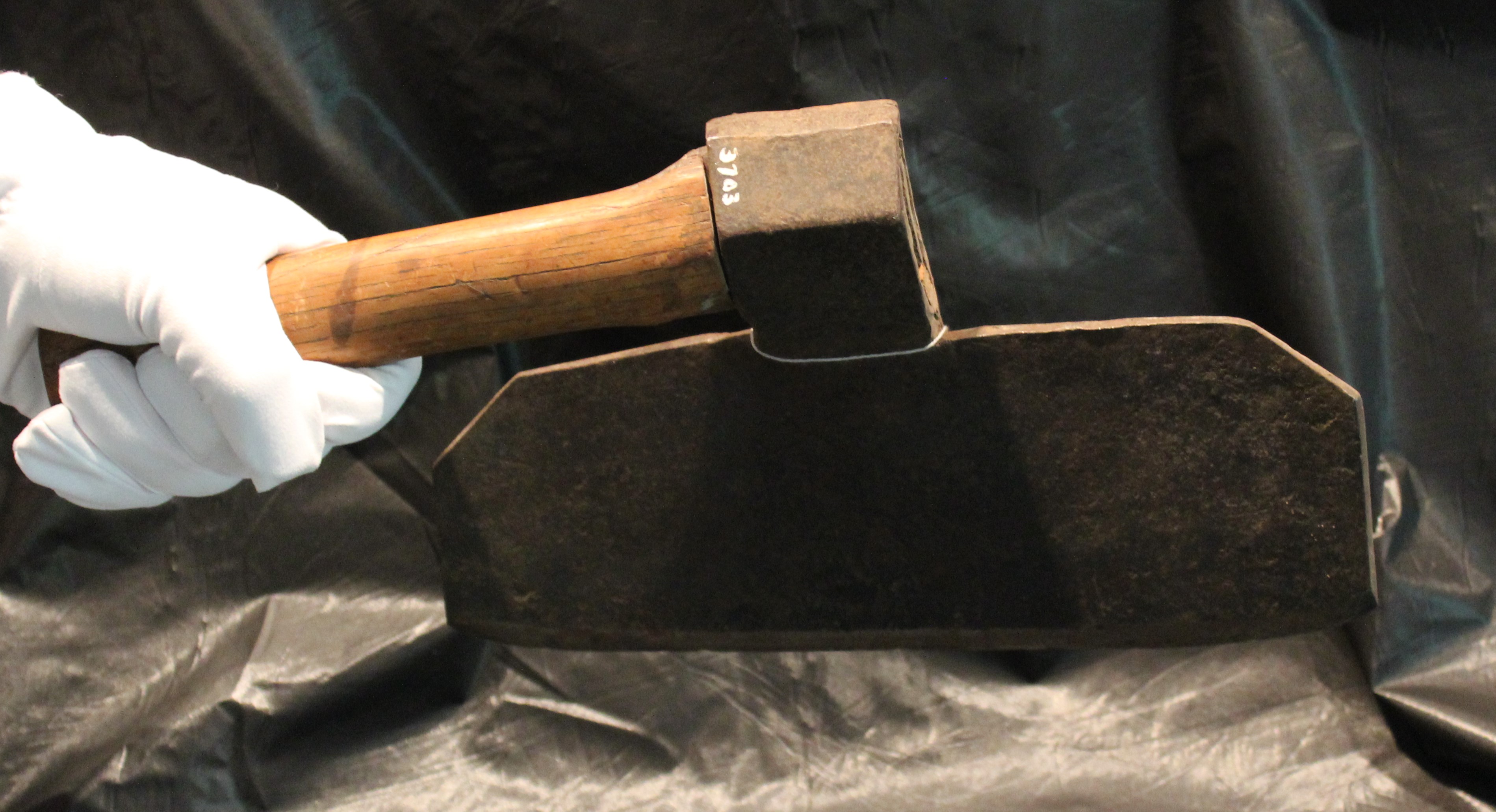Historic Tools of North Castle
Short Handle Broad Hewing Axe
This tool at Smith’s Tavern is a broad hewing ax; it has a short handle. This ax was used to hew logs and for cutting corners in a log building.
After a tree is selected and felled, hewing can take place where the log landed or be skidded or twitched (skidded with a horse or oxen) out of the woods to a work site. The log is placed across two other smaller logs near the ground or upon trestles about waist height; stabilized either by notching the support logs, or using a 'timber dog' (also called a log dog, a long bar of iron with a tooth on either end that jams into the logs and prevents movement). The hewer measures and locates the timber within the log on both ends and marks lines along the length of a log, usually with a chalk line. Hewing is done on the sides of the logs with a broad ax. Hewing occurs from the bottom of the stem upwards towards what was the top of the standing tree, reducing the tendency of the broken fibers to migrate inwards towards the eventual beam.
Reference: https://en.wikipedia.org/wiki/Hewing
Catalog Items:
Item T22
| Location: | Panel 17 |
|---|---|
| Length: | 36 cm |
| Width: | 18 cm |
| Weight: | 1447 g |

